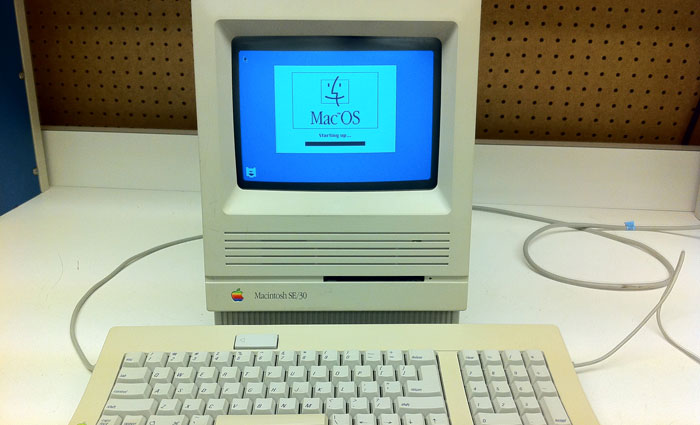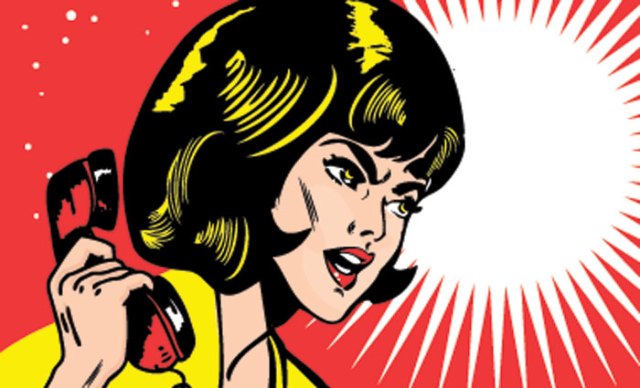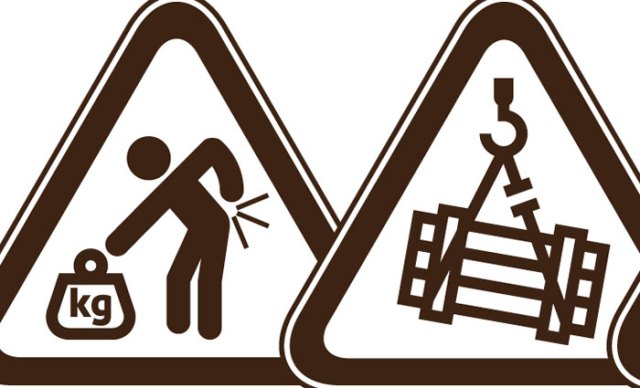
You had all different fonts available to you, you could do columns and squares, but what you saw was not what you got. You had to use keyboard commands and interpret what you would get in the finished job.
It transferred images to a photographic roll of paper, which had to be developed. The exposed roll of paper went to the dark room in a cassette. We had trays set out in the basin and we’d just pull this paper out and feed it through the developer. Give it a quick wash in the fixer and another wash and hang it up to dry. Then get the scissors, cut, cut, cut, paste it all up.
It was slow and time consuming. One day, a salesman came to the door with an Apple computer. It was small, about a foot square: a Mac SE/30, with a little screen not much bigger than a GPS.
The salesman said: “I want to show you what this little computer can do.”
“Get on,” I said. “We’ve got this really sophisticated phototypesetter here. You’re wasting your time.” By the end of the day I was eating those words.
He said he would set up a simple document for me. I thought, I’ll be smart here. “How about an invoice book. A page with a ruled form for this and that and a round cornered window for the address to go in. I want the heading to be in a 48-point type and the lines to be hairlines.”
While I’m talking to him, he’s doing it. Not keyboard commands like the phototypesetter. I said: “Well that’s all very well, having it on your screen, but we need a perfect black image on white paper.”
“That’s alright, I’ve got a laser printer out in the car. Give me 10 minutes.”
So I’m saying to the girls: “I can just imagine what this image is going to look like. It’ll be all grey and dotted and broken.” Because we’d seen what a pin writer could do.
He brought this Apple laser printer in, set it up, printed this page and it was just beautiful.
The phototypesetter cost us about $40,000, which was a lot of money in 1982. This Mac was about $12,000 for the computer, software, printer and a pin writer as well. So we ordered the machine.
But what were we going to do? It was only on trial for a couple of weeks. We couldn’t have both the Mac and the phototypesetter, because we couldn’t afford it. So I got onto the company that sold us the phototypesetting machine and told him this Mac computer left the typesetter for dead.
He said: “These Macs will be flash in the pan. They’ll be gone by next year. Keep using your typesetter.”
“All right, I’ll keep it for three months, and if we’re not using it enough, will you do a trade on a printing press?”
“Yes, we’ll do that. But you’ll find that after a couple of weeks you’ll put the Mac in the cupboard and won’t ever use it.”
That typesetter never got physically turned on in three months.
Paul McMahon
Print’s Past excerpts are drawn from interviews held by Benjamin Thorn, curator of the Armidale Museum of Printing, and are due to be published in a forthcoming book.
Comment below to have your say on this story.
If you have a news story or tip-off, get in touch at editorial@sprinter.com.au.
Sign up to the Sprinter newsletter



